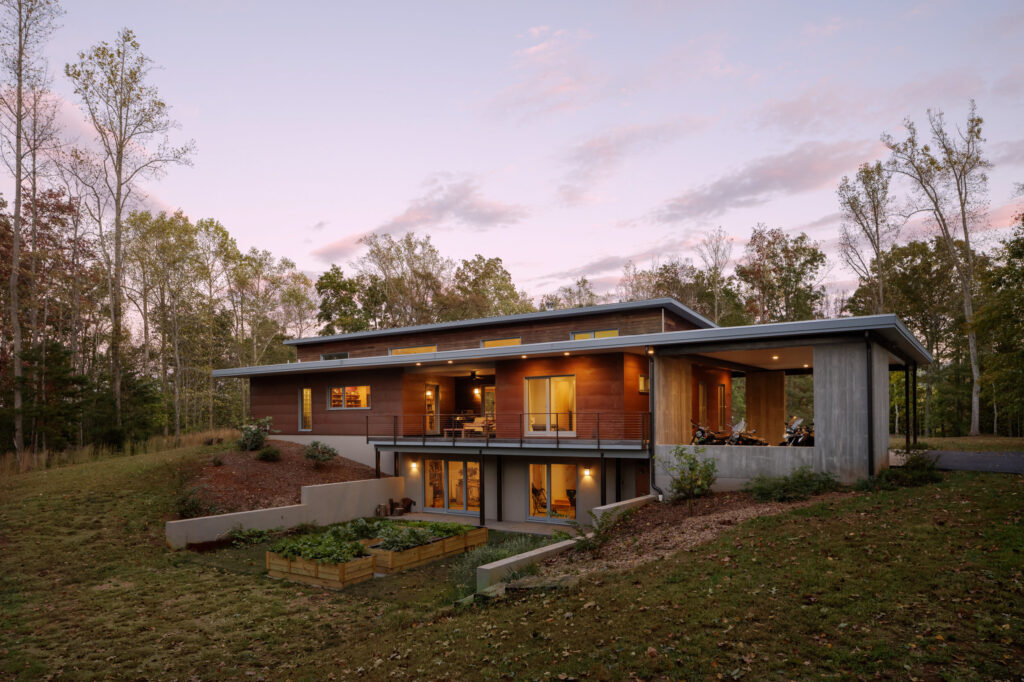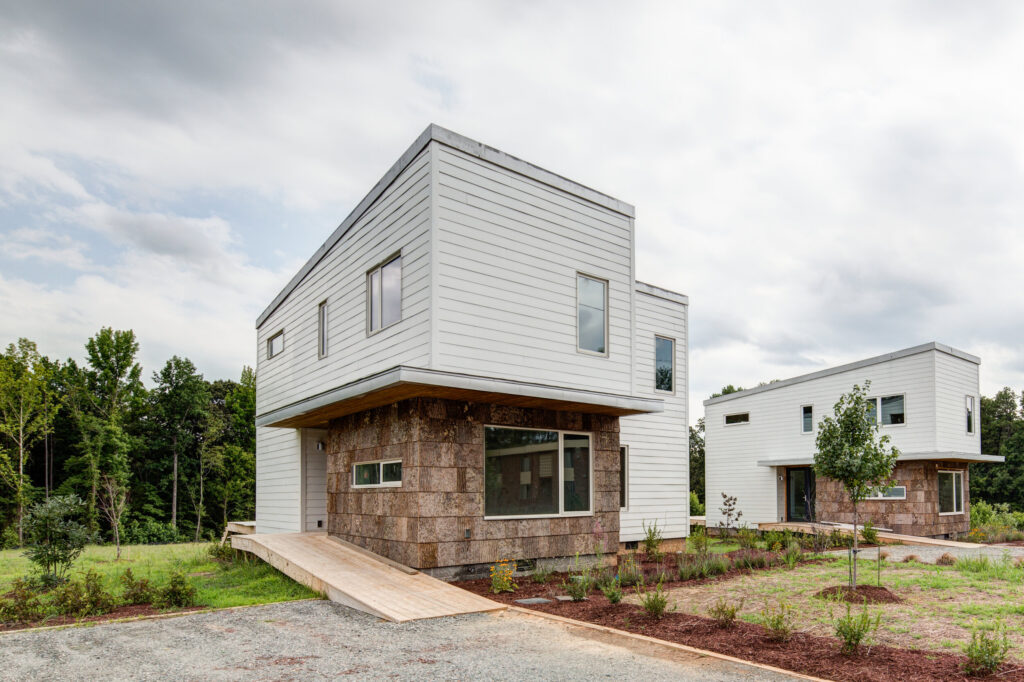Homes that are certified or recognized as “passive” to achieve net-zero status produce as much energy as they consume, and consume energy in efficient ways thanks to design strategies that take advantage of light, heat, circulation, and airflow to be uniquely sustainable. The Passive House Institute US (PHIUS) has certified or pre-certified more than four million square feet of projects, most of them in the last five years. Virginia is home to 20 certified or pre-certified projects, which must secure third-party quality assurance, meet the Department of Energy’s standard for net zero energy efficiency, and gain recognition from the Environmental Protection Agency for indoor air quality, among other qualifications.

Architects at 18 Virginia firms are PHIUS professionals, who are certified after up to eight weeks of pre-recorded and live training modules tailored to climate variations, market conditions, and building components in North America. Charlottesville’s Mark Graham, AIA, and Barbara Gehrung, Intl. Assoc. AIA, principals and co-founders of Gehrung+Graham, are both certified. They say that while energy efficiency isn’t always obvious from the outside, Passive House principles are about pursuing a visible and measurable impact. It’s also gaining purchase among Virginia residents and developers.
“We’re busier now than we were five years ago when we started, and we have a lot of people coming to us interested in the idea of passive houses,” says Graham. “They’re clients, they’re builders, and they come to us to find an optimal solution based on their budgets. Our mission is to bring energy efficiency to all budgets.”
PHIUS certification carries costs ultimately borne by clients, which are pinned to the interior conditioned floor areas of projects, on top of the costs of design, development, and construction. For a modest home under 2,500 square feet, it’s $1,500. Under 4,500 square feet, it’s $2,000. Certification is not required to be a net-zero home or even utilize Passive House standards, developed by Wolfgang Feist three decades ago for his Passivhaus Institute in Darmstadt. (Feist’s standards were later adapted by the Chicago-based architect Katrin Klingenberg, who co-founded PHIUS in 2007.) On a tight budget or even in a situation where a home’s construction has gone over-budget, $1,500 or $2,000 can seem like an extravagance.
“Our clients want a healthy building and they want to have a small energy footprint. But, if they want to purchase more solar panels, they might not want to pursue the expense of certification,” says Gehrung. “You have to value-engineer their priorities. We care about affordability and it’s something we want to bring together with passive house principles and certification.”

Graham and Gehrung’s portfolio includes a dozen homes—a combination of new construction and retrofits, designed together and independently—as well as several other projects they’ve consulted on, including EcoMOD South in New Boston, Virginia, three affordable and modular prototype residences designed by students from the University of Virginia’s School of Architecture. Gehrung says they would like to do more modular and affordable projects that are certified passive.
For Graham, durability is the one overarching quality that knits together all of these efforts, including their net-zero work for residential clients.
“We really focus on our envelope assemblies to make sure our architecture can last, but durability also has to do with designing for someone who will want to live and work there in 20 years,” he says. “Any way we can spread energy efficiency and energy producing architecture, we’ll do it.”
About the author
William Richards is a writer and editorial consultant based in Washington, D.C. From 2007 to 2011, he was the Editor-in-Chief of Inform Magazine.
